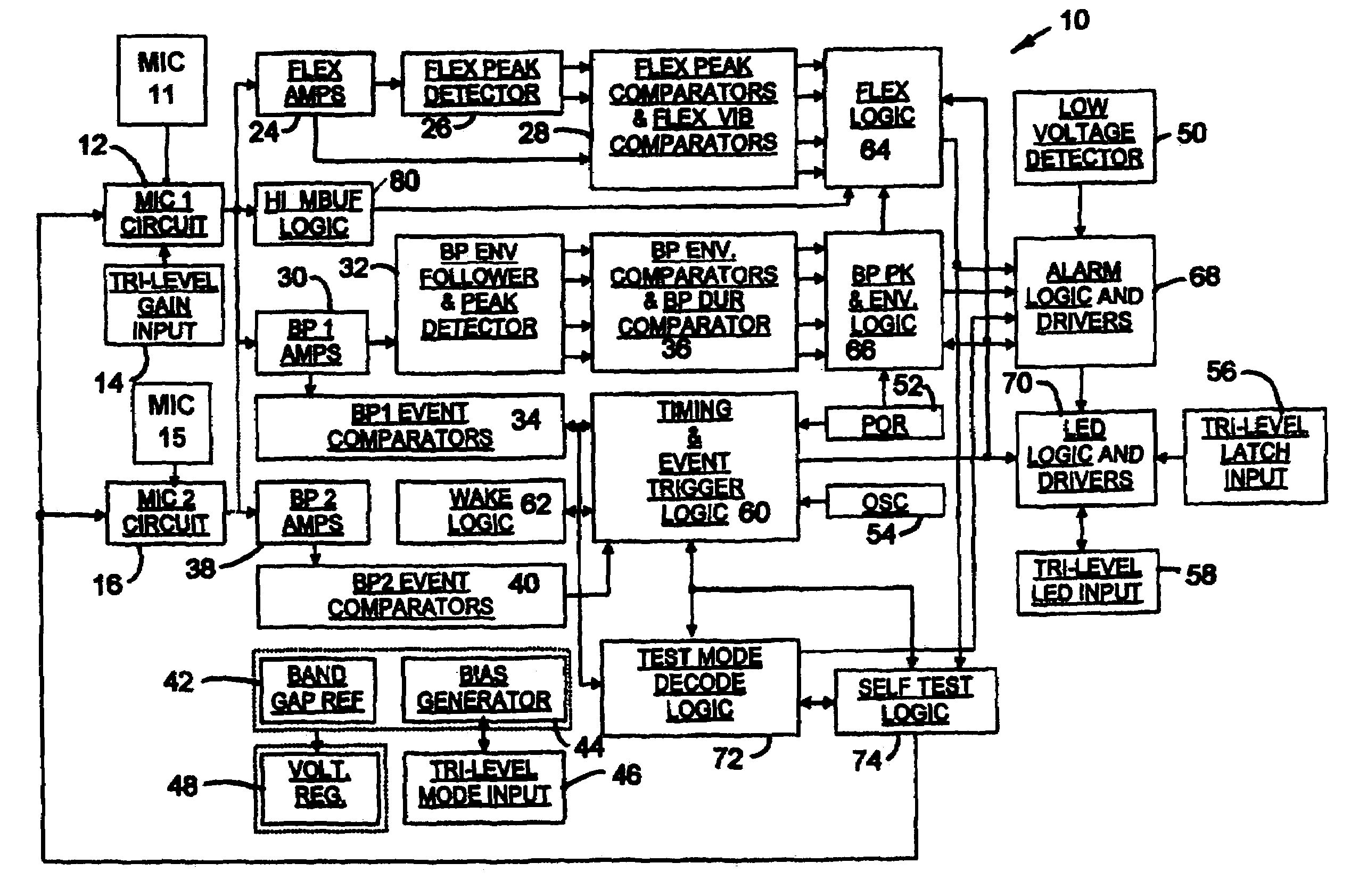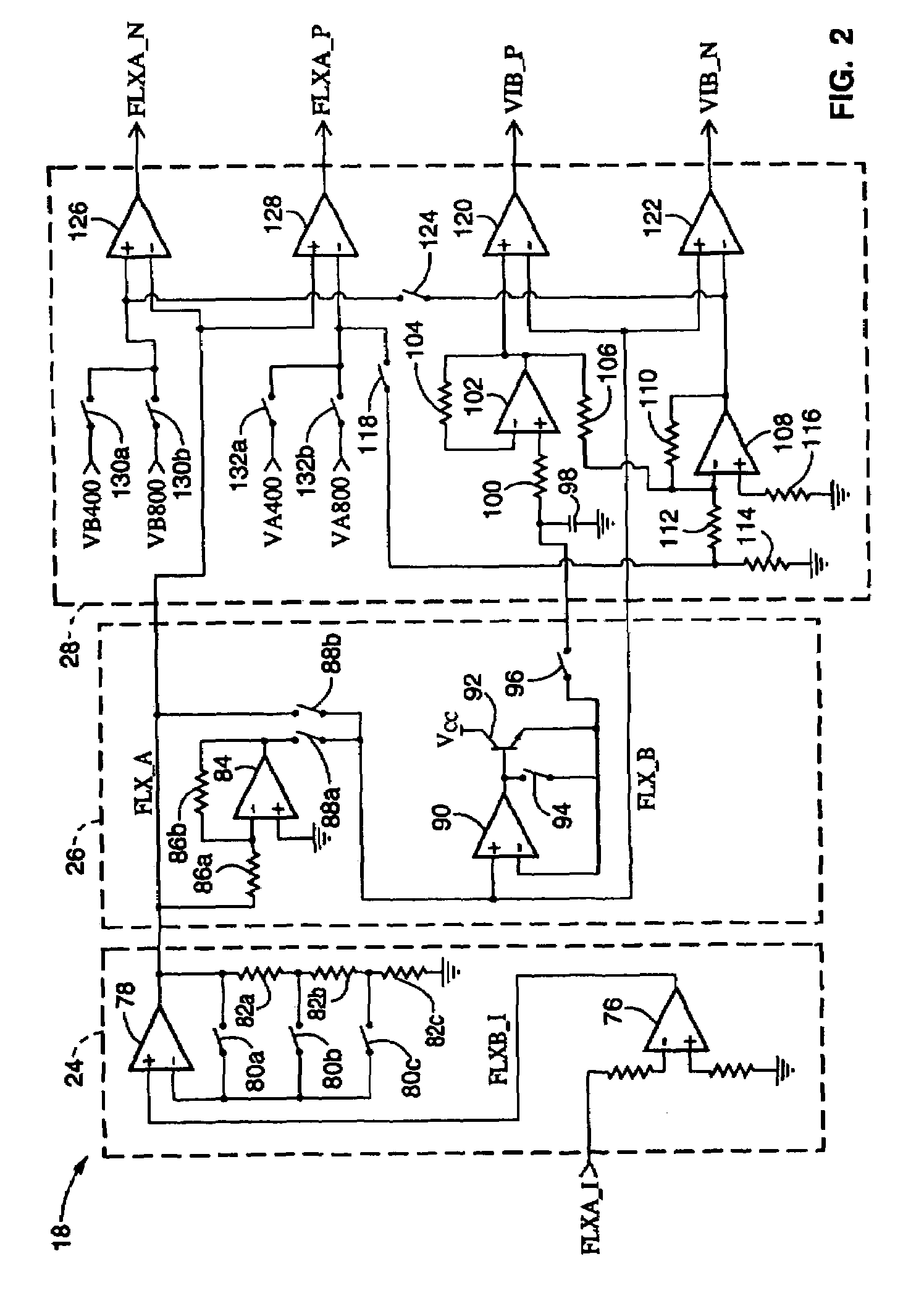Method of eliminating impact/shock related false alarms in an acoustical glassbreak detector
a technology false alarm, which is applied in the direction of burglar alarm mechanical actuation, anti-theft devices, instruments, etc., can solve the problems of false alarms and problems of acoustic glass break detectors
- Summary
- Abstract
- Description
- Claims
- Application Information
AI Technical Summary
Benefits of technology
Problems solved by technology
Method used
Image
Examples
Embodiment Construction
[0025]U.S. Pat. No. 6,538,570 issued to the applicant herein on Mar. 25, 2003. The apparatus of the present invention will be better understood by reference to the disclosure therein which is incorporated herein by reference.
[0026]The immediately following part of this description will be understood to provide an overall description of the apparatus. Subsequent parts of this description will describe the features of the invention specifically directed to providing a capability of preventing false alarms as the result of an impact to the surface directly behind the sensor.
[0027]A preferred embodiment of the glass-breakage detector employing a highly-selective method of glass flex discrimination is embodied in the apparatus generally shown in FIG. 1. It will be appreciated that the apparatus may vary as to configuration and as to details of the parts without departing from the basic concepts as disclosed herein.
1. Overview
[0028]The acoustic detection circuit and method of the present ...
PUM
 Login to View More
Login to View More Abstract
Description
Claims
Application Information
 Login to View More
Login to View More - R&D
- Intellectual Property
- Life Sciences
- Materials
- Tech Scout
- Unparalleled Data Quality
- Higher Quality Content
- 60% Fewer Hallucinations
Browse by: Latest US Patents, China's latest patents, Technical Efficacy Thesaurus, Application Domain, Technology Topic, Popular Technical Reports.
© 2025 PatSnap. All rights reserved.Legal|Privacy policy|Modern Slavery Act Transparency Statement|Sitemap|About US| Contact US: help@patsnap.com



